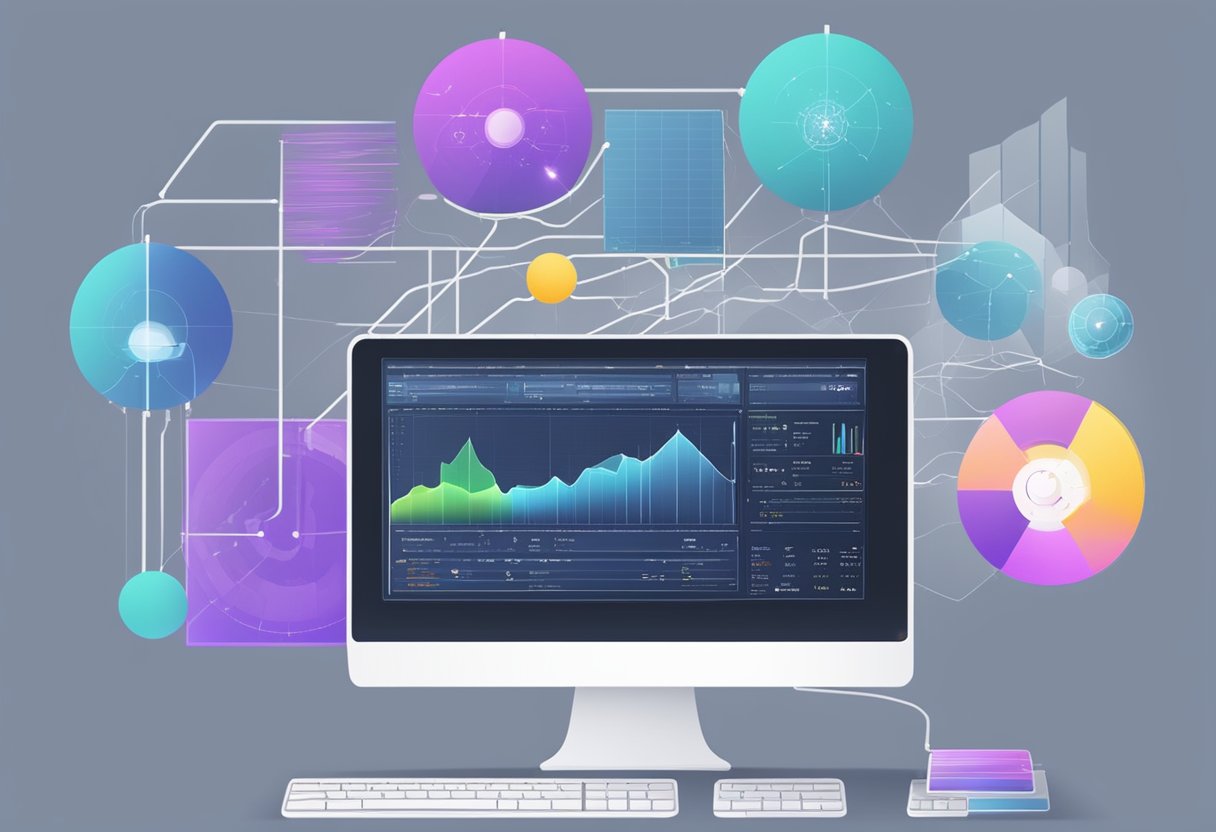Machine learning has revolutionized the world of marketing by providing businesses with powerful tools to analyze customer data.
One of the most important applications of machine learning in marketing is audience segmentation. Audience segmentation is the process of dividing customers into groups based on shared characteristics and behaviors.
Machine learning algorithms can analyze large amounts of customer data and identify patterns that are not visible to humans. This allows businesses to create more targeted marketing campaigns that are tailored to the specific needs and preferences of different customer segments.
Fundamentals of Machine Learning in Marketing

Understanding Audience Segmentation
Audience segmentation is a process of dividing a large group of people into smaller subsets based on similar characteristics. This process helps businesses to target their audience more effectively and offer personalized content to their customers.
In marketing, audience segmentation plays a crucial role in identifying the right target audience for a product or service, which in turn leads to increased sales and customer satisfaction.
Machine learning algorithms are becoming increasingly popular in audience segmentation due to their ability to analyze large datasets and identify patterns that humans may miss.
With machine learning, marketers can segment their audience based on various factors such as demographics, behavior, interests, and more.
By using machine learning algorithms, marketers can identify hidden patterns in their data and create more accurate and personalized marketing campaigns.
Role of AI and Machine Learning
Artificial intelligence (AI) and machine learning are transforming the way businesses operate and market their products and services.
With AI and machine learning, businesses can analyze vast amounts of data and gain insights into customer behavior, preferences, and needs.
This information can be used to create personalized marketing campaigns that are tailored to the needs of individual customers.
Machine learning algorithms can be used to segment audiences based on various factors such as demographics, behavior, interests, and more.
By using machine learning algorithms, businesses can identify hidden patterns in their data and create more accurate and personalized marketing campaigns. This results in increased customer satisfaction and higher sales for the business.
Machine Learning Techniques for Segmentation

Machine learning is a powerful tool for analyzing customer data and finding insights and patterns.
It enables marketers to launch targeted ad marketing campaigns that are tailored to customer’s specific needs.
Machine learning methodologies are a great tool for audience segmentation, which is much harder to do manually or with conventional analytical techniques.
Clustering Methods Overview
Clustering is a technique for grouping similar data points together. It is an unsupervised machine learning technique that involves identifying patterns in the data without any prior knowledge of the data structure.
Clustering algorithms are used to group similar customers together based on their behavior, demographics, or other attributes.
K-Means Clustering and Its Applications
K-Means clustering is a popular clustering algorithm that is used to group similar data points together.
It is an unsupervised machine learning algorithm that is used to partition a dataset into K clusters.
The algorithm iteratively assigns each data point to one of the K clusters based on its distance from the cluster’s centroid.
K-Means clustering is widely used in customer segmentation to group similar customers together based on their preferences, interests, or behavior.
Hierarchical Clustering for In-Depth Analysis
Hierarchical clustering is another popular clustering algorithm that is used to group similar data points together.
It is an unsupervised machine learning algorithm that is used to create a hierarchy of clusters.
The algorithm starts with each data point in its own cluster and then iteratively merges the clusters based on their similarity.
Hierarchical clustering is widely used in customer segmentation to group similar customers together based on their preferences, interests, or behavior.
Evaluating Clustering Performance
Evaluating clustering performance is an important step in the customer segmentation process.
There are several metrics that can be used to evaluate the performance of clustering algorithms, including silhouette score, Davies-Bouldin index, and Calinski-Harabasz index.
These metrics are used to measure the quality of the clustering results and to determine the optimal number of clusters.
Data Handling and Preprocessing

Data handling and preprocessing are essential steps in machine learning. They involve cleaning, transforming, and preparing data for analysis.
The quality of the dataset used for machine learning affects the accuracy and reliability of the results.
In this section, we will discuss the importance of quality datasets, data science tools and libraries, and preparing data for machine learning.
Importance of Quality Datasets
Quality datasets are essential for accurate and reliable machine learning results.
The dataset used for machine learning should be representative of the population it is intended to analyze.
It should be large enough to capture the variability of the data and should not contain any outliers or missing values.
The data should also be balanced, meaning that each class or segment should have a sufficient number of samples.
Data Science Tools and Libraries
Data science tools and libraries are essential for handling and preprocessing data in machine learning.
Python is a popular programming language used for data science. It has many libraries such as Pandas, NumPy, and Scikit-learn that make data handling and preprocessing more manageable.
Pandas is a library used for data manipulation and analysis, while NumPy is used for numerical computations. Scikit-learn is a library used for machine learning and includes many algorithms and tools for data preprocessing.
Preparing Data for Machine Learning
Preparing data for machine learning involves several steps such as scaling, encoding, and splitting the data.
Scaling is the process of transforming data to a common scale to improve the performance of machine learning algorithms.
Encoding is the process of transforming categorical data into numerical data that can be used for machine learning.
Splitting the data into training and testing sets is essential for evaluating the performance of the machine learning algorithm.
Strategic Implementation and Business Impact

Machine learning has revolutionized the way businesses approach audience segmentation. By using data-driven insights, companies can create targeted marketing campaigns that drive revenue and improve customer relationship management.
In this section, we will explore the strategic implementation and business impact of machine learning in audience segmentation.
Integrating Segmentation into Marketing Strategy
Integrating audience segmentation into a company’s marketing strategy is crucial for driving business growth.
By dividing the target audience into smaller groups based on shared characteristics, companies can create more personalized and relevant marketing messages. This approach leads to higher engagement rates and increased revenue.
Machine learning algorithms can help identify patterns and insights that would be difficult to uncover using traditional market research methods.
By analyzing large datasets, businesses can gain a deeper understanding of their customers’ preferences, behaviors, and needs.
This information can then be used to create targeted marketing campaigns that resonate with specific segments of the audience.
Driving Business Growth with Targeted Marketing
Targeted marketing is a powerful tool for driving business growth.
By delivering personalized messages to specific segments of the audience, companies can increase their conversion rates and improve customer retention.
Machine learning algorithms can help identify the most effective marketing channels and messages for each segment of the audience, leading to higher engagement rates and increased revenue.
For example, a company selling luxury watches might use machine learning to identify customers who have previously purchased high-end jewelry.
By analyzing their purchase history and browsing behavior, the company can create targeted marketing campaigns that showcase their latest luxury watch collection.
This approach is more likely to resonate with the target audience and lead to higher conversion rates.
Case Studies and Success Stories
There are many examples of companies that have successfully implemented machine learning in audience segmentation.
For instance, Sephora, a beauty retailer, uses chatbots powered by AI to provide personalized recommendations to their customers. The chatbots analyze the customer’s purchase history and preferences to create a customized shopping experience.
Another example is H&M, a fashion retailer, which uses machine learning algorithms to analyze customer data and create targeted marketing campaigns.
By analyzing the customer’s purchase history and browsing behavior, H&M can create personalized recommendations that lead to higher engagement rates and increased revenue.



